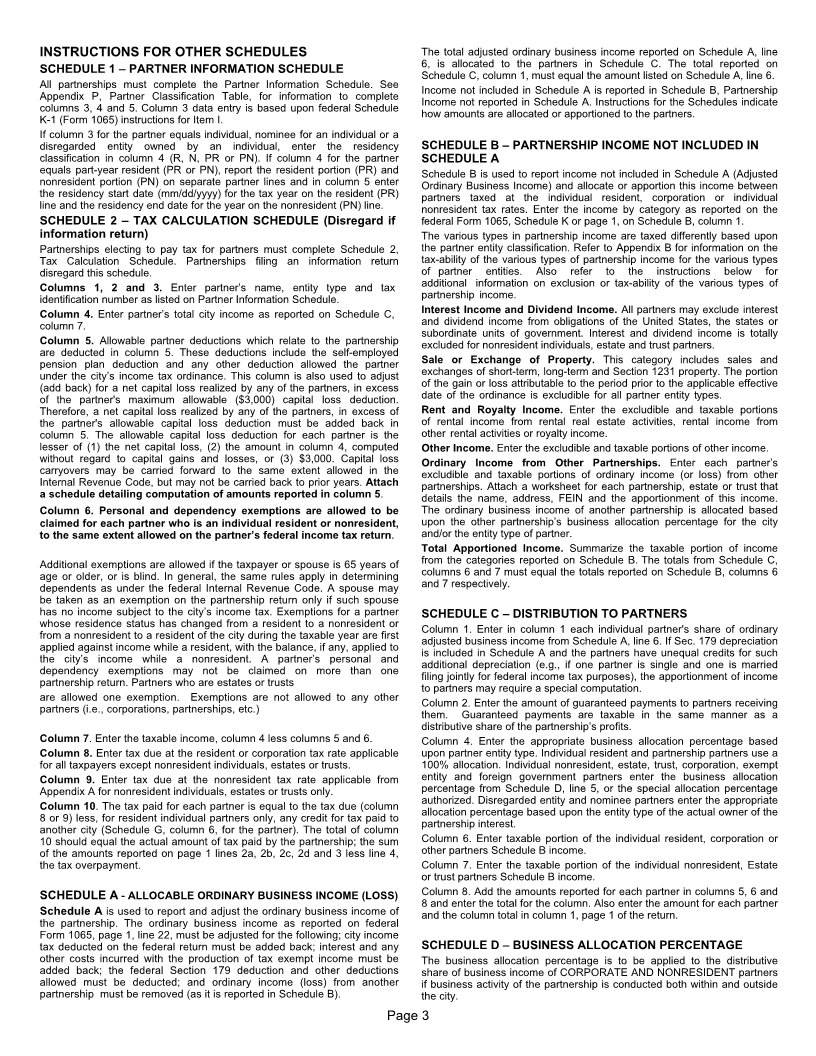
Enlarge image
Taxability of Partnership Income under the Michigan
Uniform City Income Tax Ordinance
Partnerships Required to File a Return
Every partnership with business activity in the city, whether or not
an office or place of business was maintained in the city, is
required to file an annual return. Syndicates, joint ventures, pools
and like organizations and Limited
City of Grayling Liability Companies (LLC's) electing to be taxed as partnerships at
the federal level will also use Form GR-1065.
Partners who are individual RESIDENTS are taxed on their
entire distributive share of the net profits of the partnership,
including that arising from business activities outside the city:
ordinary business income, interest income, dividend income,
rents, royalties, other income, and gains from the sale or
exchange of property, either tangible or intangible, regardless of
where the property is located.
Partners who are individual NONRESIDENTS including
estates and trusts are taxed on their distributive share of the
2022 Partnership partnership’s ordinary business income which is attributable to
business activity in the city, plus net rentals of tangible property
located in the city and gains from the sale or exchange of tangible
Income Tax Return property in the city. Nonresidents are not taxed on their share of
net rentals of property located outside the city, gains from the sale
or exchange of tangible property located outside the city, gains
FORM GR-1065 from the sale or exchange of securities or other intangible
property, or non-business interest and dividend income.
When the receipt of interest and other intangible income is directly
related to the nature of the business, such interest, etc., is
business income taxable to a nonresident, and is to be included in
ordinary business income in Schedule A.
Partners who are CORPORATIONS are taxed at the corporate
tax rate on their distributive share of the partnership’s: ordinary
MAILING ADDRESS: business income attributable to business activity in the city; net
rentals of tangible property; and gains from the sale or exchange
CITY OF GRAYLING of tangible property attributable to business activity in the city.
INCOME TAX DIVISION Thus, all taxable income of a corporate partner (net profits of a
corporation) is determined by the business allocation
PO BOX 515 percentage of the partnership.
EATON RAPIDS, MI 48827-0515 Partners who are PARTNERSHIPS, LLC’s electing to be taxed
as a partnership, JOINT VENTURES, ETC. (downstream
partnership) are taxed based upon their partner’s entity
classification and share of partnership income.
CITY WEBSITE: DUE DATE OF PARTNERSHIP RETURN
Calendar year taxpayers must file by April 30, 2022. Fiscal
WWW.CITYOFGRAYLING.ORG year taxpayers must file by the last day of the fourth month
after the end of their fiscal year or short period return.
EXTENSION OF TIME TO FILE A PARTNERSHIP RETURN For
partnerships electing to pay tax, Form GR-7004, Automatic
Extension of Time to File Certain Business Income Tax, Information
and Other Returns, must be filed on or before the due date for filing
Email: graylingtax@issi-central.com the partnership return. An extension is automatically granted upon
filing of Form GR-7004 and payment of the tentative tax balance
Phone: (989) 348-7750 due (Form GR-7004, line 3). Failure to pay the balance due
invalidates the extension request. Interest and penalty will
Fax: (517)441-9719 be assessed on taxes paid late even if an extension of time to
file is granted. For partnerships filing an information return, a six
month extension of time to file is automatically granted. Do not
file Form GR-7004, Application for Automatic Extension of Time to
File Certain Business Income Tax, information and Other Returns.
REQUIRED RETURN ATTACHMENTS
When filing a city’s partnership return, Form GR-1065, certain
schedules and copies of federal forms are required to be
attached. See page 6, Appendix A for a listing of attachments
GENERAL INFORMATION and attachment order.
Disclaimer OBTAINING PARTNERSHIP RETURN FORMS
These instructions are interpretations of the Uniform City Income Tax
Ordinance, MCLA 141.601 et seq. The Ordinance will prevail in any Partnership return forms are not mailed to partnerships. The
disagreement between these instructions and the Ordinance. forms are available for download on the city's website.
Page 1





